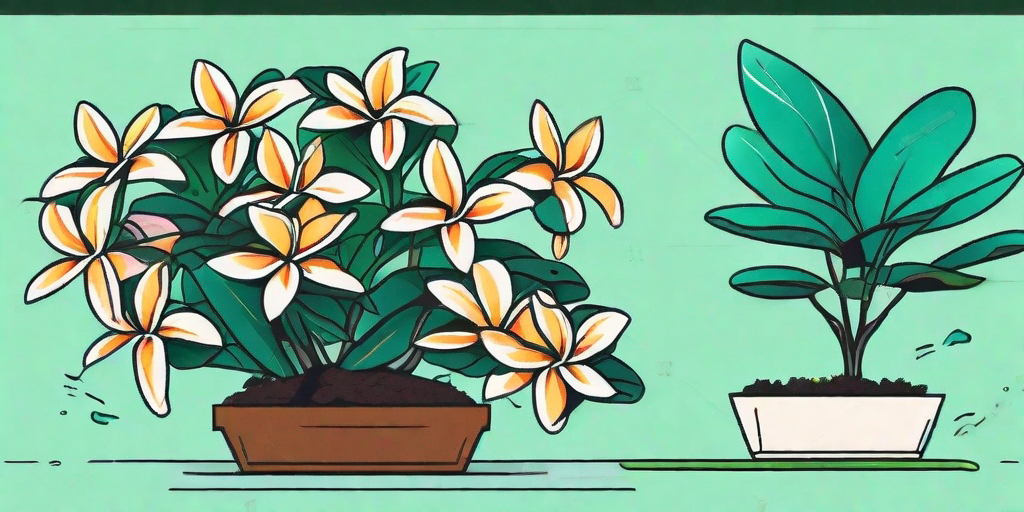
Ah, the Plumeria, the sweet-smelling, vibrant flower that can transform any garden into a tropical paradise. But wait! Before you start daydreaming about your Hawaiian-style backyard, there's a little thing called 'transplanting' that needs to be done. Don't worry, it's not as daunting as it sounds. In fact, with a bit of cheeky humor and a dash of patience, you'll be on your way to creating your own blooming Eden in no time.
Understanding the Plumeria
Before you dive into the world of Plumeria, it's crucial to understand what you're dealing with. Plumeria, also known as Frangipani, is a genus of flowering plants native to the tropical and subtropical Americas. They're famous for their intensely fragrant, lovely flowers which bloom from spring to early fall.
Now, you might be thinking, "Great, another high-maintenance tropical plant." But hold your horses! Plumeria is surprisingly easy to grow. It's drought-tolerant, can thrive in almost any well-draining soil, and doesn't mind a bit of neglect. In fact, it's almost like the cat of the plant world - independent, but still appreciates your love and attention.
Transplanting Plumeria: The Step-by-Step Guide
Alright, enough chit-chat. Let's get down to business. Here's a step-by-step guide to transplanting Plumeria. Remember, gardening gloves are optional, but a sense of humor is mandatory!
Step 1: Choose the Right Time
Timing is everything when it comes to transplanting Plumeria. The best time to do it is in the spring, just before the plant breaks dormancy. This gives the Plumeria enough time to establish itself before the growing season.
However, if you missed the spring window, don't panic! Plumeria is a forgiving plant. You can also transplant it in the summer or early fall, as long as you give it plenty of care.
Step 2: Prepare the New Location
Plumeria isn't picky about its new home, but it does have a few requirements. The location should have full sun exposure and well-draining soil. If the soil is too heavy or clayey, consider amending it with some sand or perlite.
When it comes to the hole, make it twice as wide and just as deep as the root ball. This gives the roots plenty of room to spread out and get comfortable in their new home.
Step 3: The Actual Transplanting
Now comes the fun part - the actual transplanting. First, gently remove the Plumeria from its current pot. Be careful not to damage the roots. Then, place it in the prepared hole, making sure the top of the root ball is level with the soil surface.
Once the Plumeria is in place, backfill the hole with soil, firming it gently around the base of the plant. Then, give it a good watering, and voila! You've successfully transplanted a Plumeria.
Caring for Your Transplanted Plumeria
Transplanting is just the first step. Now comes the ongoing care. But don't worry, it's not as complicated as it sounds.
Watering
Plumeria likes to dry out between waterings, so don't be too eager with the watering can. A good rule of thumb is to water deeply but infrequently. In the growing season, this might mean watering once a week. In the winter, you can cut back to once a month.
Fertilizing
While Plumeria isn't a heavy feeder, it does appreciate a bit of extra nutrition during the growing season. Use a high-phosphorus fertilizer to promote blooming, and apply it every 2-4 weeks from spring to early fall.
Pruning
Pruning is not necessary for Plumeria, but it can help maintain a desirable shape and size. If you decide to prune, do it in the late winter or early spring, before the plant breaks dormancy.
Frequently Asked Questions
- Can I transplant Plumeria in the winter?
- While it's possible to transplant Plumeria in the winter, it's not recommended. The plant is dormant during this time, and moving it can cause unnecessary stress.
- How often should I water my transplanted Plumeria?
- Water your Plumeria deeply but infrequently. This might mean watering once a week during the growing season, and once a month in the winter.
- What type of fertilizer should I use for Plumeria?
- Use a high-phosphorus fertilizer to promote blooming. Apply it every 2-4 weeks from spring to early fall.
Conclusion
Transplanting Plumeria might seem like a daunting task, but with a bit of knowledge and a dash of humor, it can be a rewarding experience. So, roll up your sleeves, put on your gardening gloves (or not), and get ready to transform your garden into a tropical paradise. Happy gardening!















